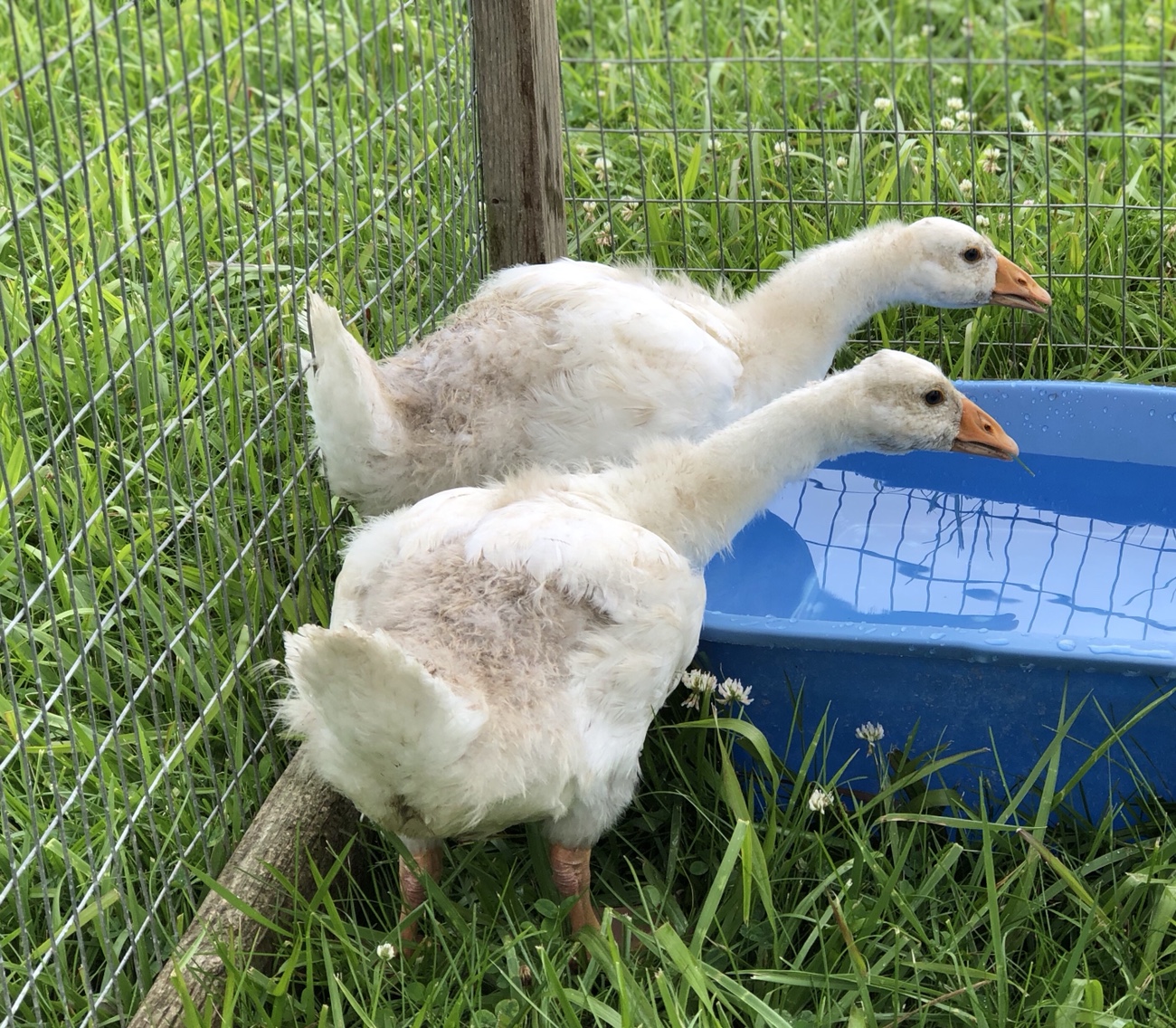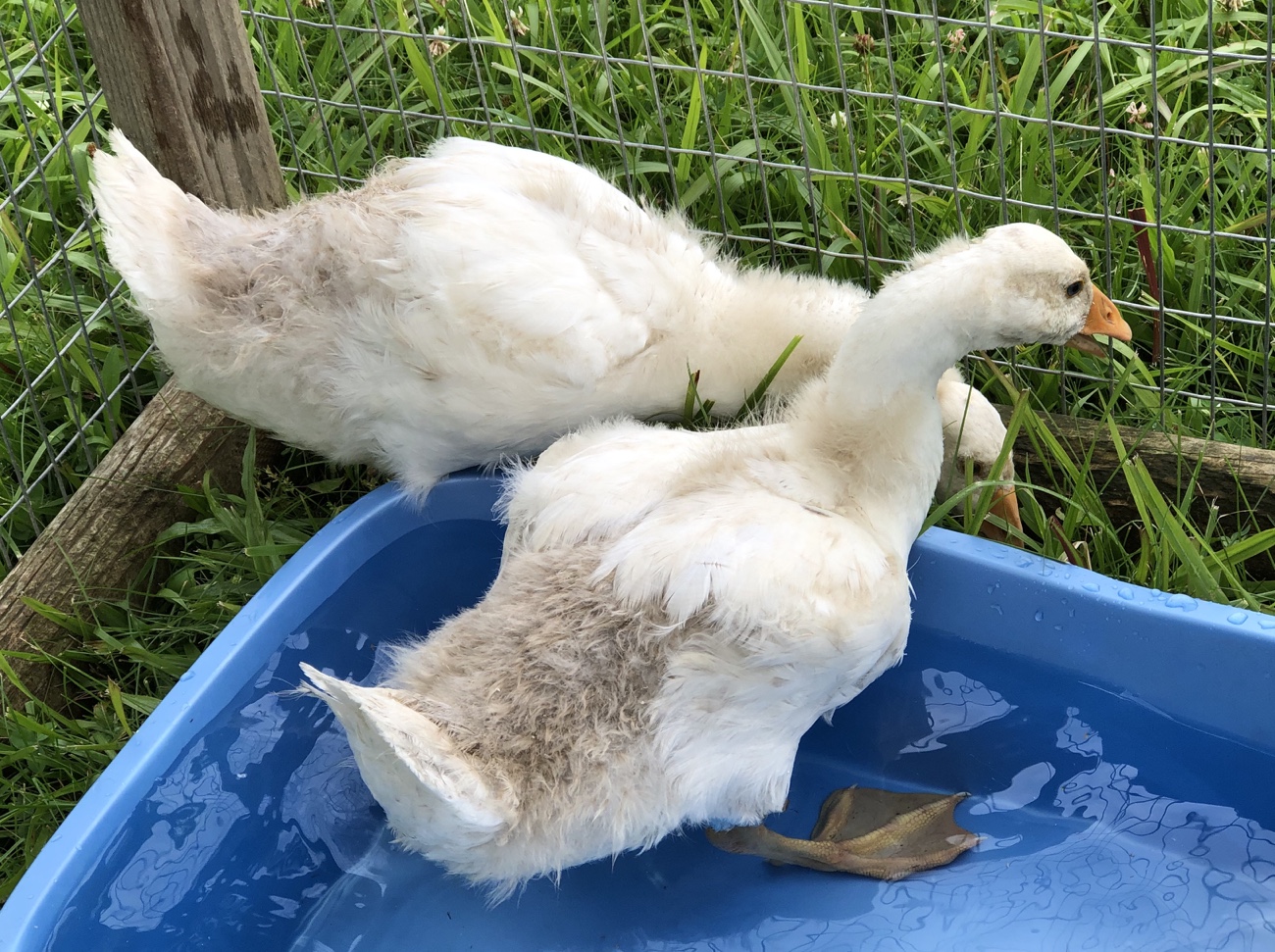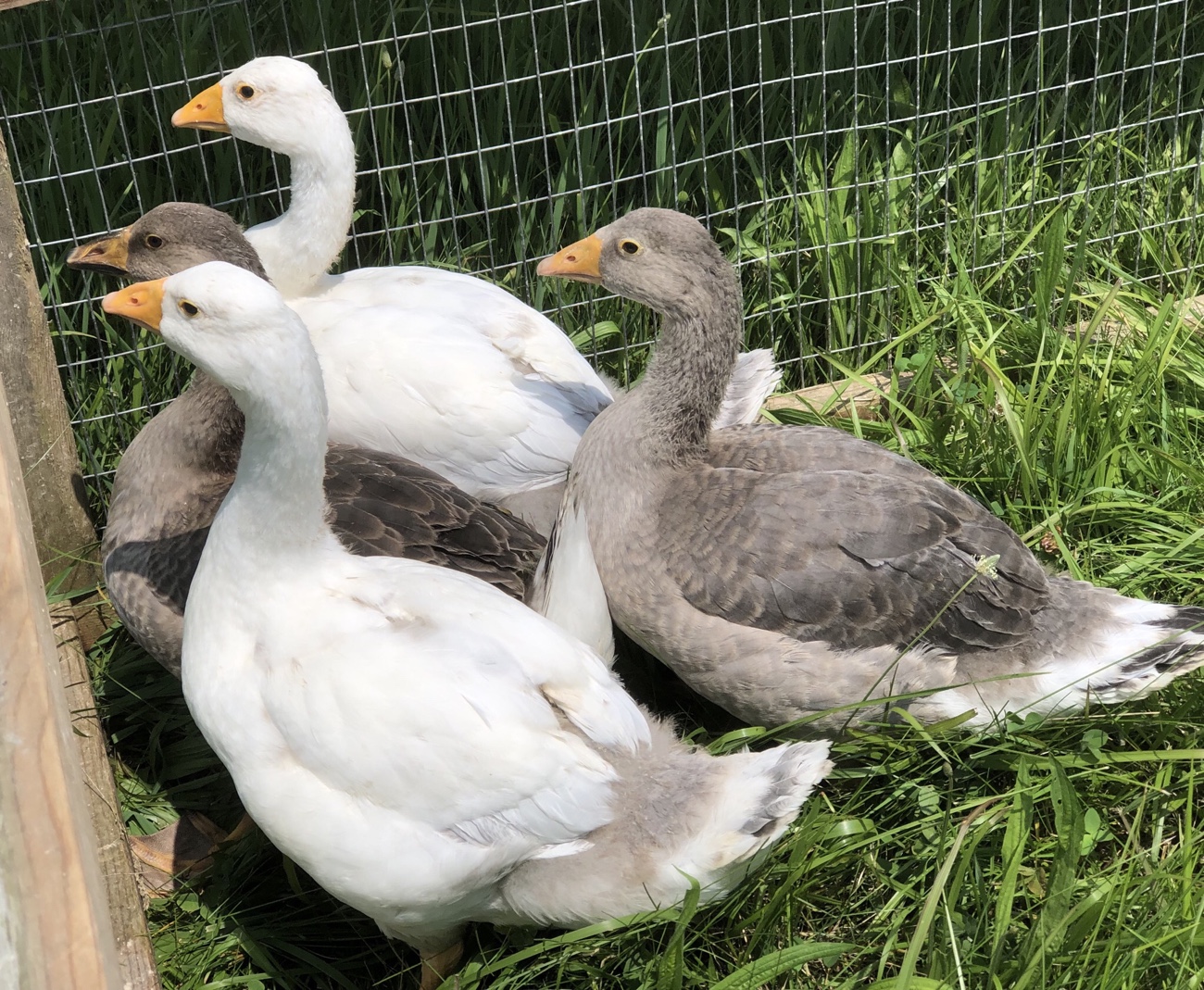
Today, we brought home two male Pilgrim goslings (ganders). They’re younger than our two other groups, but just a few weeks apart from the incubator girls. With the addition of these boys, we should now have a good goose-to-gander ratio.
After the very recent loss of two of our incubator-hatched female Pilgrim goslings, it may seem strange that we just picked up two male goslings. Actually, we had made arrangements to get the ganders before the accident that killed the two girls occurred; these unrelated ganders will be part of our breeding group, and they’ll help increase diversity in the gene pool.
The littles were quiet in their straw-filled crate on the way home. They warbled softly to each other, undoubtedly wondering what was going on. While they didn’t like being picked up (I’ve yet to meet a goose or gander that does), they were surprisingly calm, once put down. When we got home, they went out into a quarantine tractor, where they immediately began grazing.

While I have the impression that goslings are hardwired to graze, the group of four we acquired a few weeks ago didn’t seem to graze much initially, leading me to believe that they may not have had much access to pasture. It was a head-scratcher at first, but they do seem to have figured it out.

With a total of four ganders now, we should have plenty of boys. Next year, the girls should begin laying, and a new generation of goslings will join the farm denizens.

Comments are closed.